Yucca is a bright representative of exotic evergreens. The flower is most actively cultivated in Mexico, Central America and the USA, where it is used to produce durable fabric and paper. In Europe, a flower is grown both in the open air and at home. Despite the fact that such a flower as yucca is quite popular in our country, there are a lot of questions about how to care for it at home, because the climate in its homeland is very peculiar.
Content
Variety characteristics and flower growing history
The flower has a similar appearance with a small palm tree. Yucca is characterized by a low ligneous trunk, which can be single or branched. The leaves of the plant cover the trunk, and are bored at its ends. Large evergreen leaves have an elongated shape and a sharp tip. The average height of the plant is 3 meters.
The plant is often used in landscape design due to its flowers. They are large, resembling a bell in shape. Flowers are located on short lateral shoots, forming multiple branching inflorescences. Yucca has six perianth leaves that connect at the base. The color of the flowers varies from white to cream or light green. The length of the inflorescence can reach 20 cm.
Active flower cultivation began in America, along with the rapidly increasing demand for jeans. The fabric made from this plant was very dense and of high quality. However, with the widespread use of yucca in the textile industry, there was a shortage of fibers of this plant, which soon had to be almost completely replaced by cotton.
Yucca is now grown in America and Europe for the production of ropes, paper and fabric, as well as for decorating botanical gardens. In Russia, the flower has been cultivated since 1816. For the beautiful flowering, the yucca was called the “queen of the mountains”, and for the spiky leaves - the “Spanish bayonet”.
How to care for yucca at home?
Yucca is a plant native to the subtropics. In order to grow a healthy flower at home, you must create conditions for it that are similar to the natural habitat. In addition to creating a suitable climate, it is necessary to choose a fairly spacious place: the flower grows rapidly in height.
Temperature
The temperature in the room in the summer should be between 20-25˚C. In winter, you need to maintain the air temperature at least 10˚C.
In winter, it is important to prevent drafts in the room, sudden changes in air temperature and plant overcooling: yucca can die. Air above 12˚C in the room causes the leaves to hang and turn yellow.
Lighting
Yucca is very photophilous. At home, she needs to provide a well-lit place, but not in direct sunlight: this will help to avoid drying out of the plant. In the warm season, the flower can be taken out to the balcony.In winter, Yucca may miss the sunlight. As an additional source of lighting, you can use a fluorescent lamp.
Watering and spraying
Watering should be plentiful, but not frequent. The flower tolerates drought better than excess moisture. Water should not stagnate in the soil, so you should water the Yucca when the top layer of the soil is completely dry (5 cm). The average frequency of watering is 1-2 times a week in hot weather. In winter, it is advisable to water the flower no more than once every 1.5 weeks. To moisten the soil, it is better to use settled water at room temperature.
Simultaneously with watering, it is recommended to feed the flower. For such a procedure, complex fertilizers diluted in water for agave are suitable. The solution for feeding should be twice as weak as indicated in the instructions on the package. Watering time with top dressing is April-August, with a frequency of once every three weeks.
The plant is sensitive to dry air, so regular spraying is necessary. For spraying, you need to use a spray bottle with boiled water at room temperature. When spraying in summer, sunlight should not be allowed to fall on the leaves to avoid burns.
Water should not get into leaf sockets and stagnate there. In winter, spraying should be frequent - 1-2 times a day, while in the summer, 1 spray in 1-2 days is enough. Instead of regular spraying, you can put pallets with wet pebbles or gravel near a pot with a yucca.
Pruning
Better time for pruning a plant is spring. Two days before the start of the procedure, the flower should be abundantly watered. For pruning, you need to use a disinfected secateurs or a sharp knife to prevent the barrel from decaying.
Cropping is done in one motion. Cut off half, and then break off the remaining part is unacceptable. The place of the cut needs to be dried, then pour with wax. After pruning, the palm should be placed in partial shade, and watered over the next two months once a week.
Disease
A flower can become ill if care rules are not followed and due to factors such as damage to the root system, too cold soil, drafts in the room and watering with cold water. The most common mistake florists take care of yucca is excessive watering.
As a result of excess fluid, the roots of the flower rot. The diseased flower becomes lethargic, begins to shed leaves. In this case, you need to reduce the watering of the yucca, pull out the damaged plant from the soil and remove the rotten roots. After the flower is transplanted into new soil.
Yucca is also prone to diseases such as:
- Powdery mildew and anthracnose. Fungal diseases, due to which brown spots and white coating appear on the leaves. Disease prevention: lower indoor air humidity and reduced spraying. If the flower is still sick, the soil in which the plant is located must be treated with Fundazole, and the plant itself with antifungal agents - Folly or Saprol.
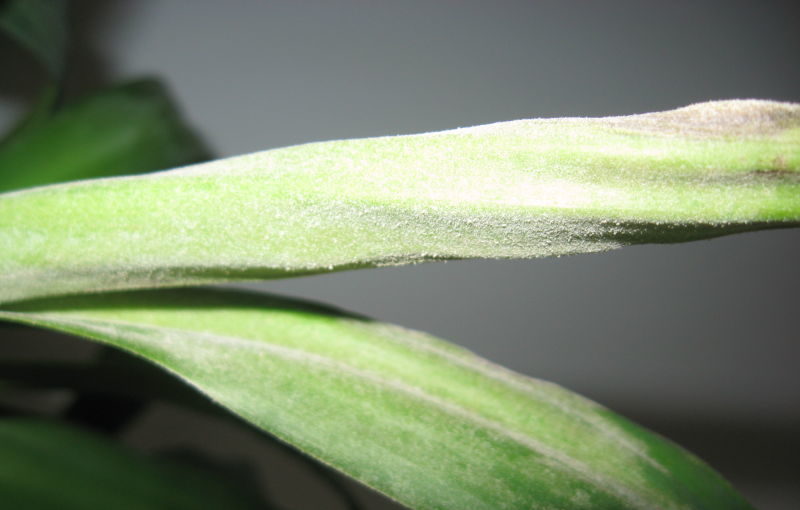
Powdery mildew - Necrosis of the leaves. A fungal infection is diagnosed by gray spots on the edges of the leaves. If the spots are small, you need to cut off only part of the sheet plate, and treat the damaged edge with Fungicide. If the sheet is completely damaged, it must be removed.
- Cercosporosis. It is characterized by light brown spots on the leaves, which quickly spread over the surface of the flower. To treat the plant, damaged foliage must be removed, and the flower treated with Topaz or Fundazole. To prevent disease, you need to limit spraying and reduce watering.
Pests
In addition to diseases, the flower is susceptible to the appearance of insects. Particularly vulnerable are plants with weakened immunity. Among pests Yucca distinguish:
- Mealybug. Often appears in the offseason, with a change in temperature. The pest looks like cotton rolls.The worm quickly multiplies and sucks the juice from the leaves. To get rid of it, you need to wipe the yucca leaves with a cotton swab dipped in soapy water, and then treat the entire plant with an insecticide. Processing should be carried out 3 times with an interval of a week.
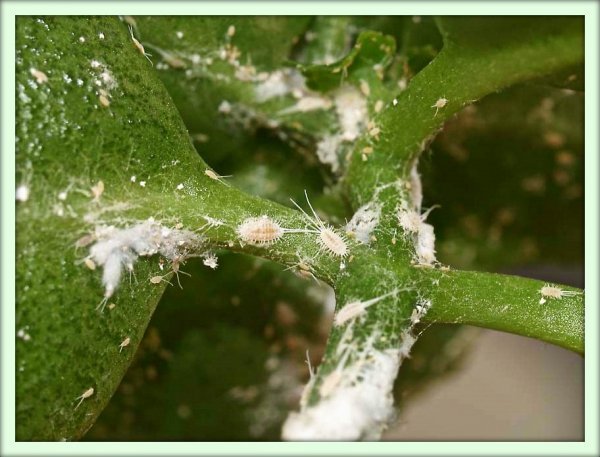
Mealybug - Shield. The parasite sucks the juice of the plant, forming a sticky shiny discharge. They clog the pores of healthy leaf tissue, resulting in fungal infections. A soap solution that needs to be wiped off the foliage will help get rid of the scab. Then remove the topsoil and treat the flower with an insecticide.
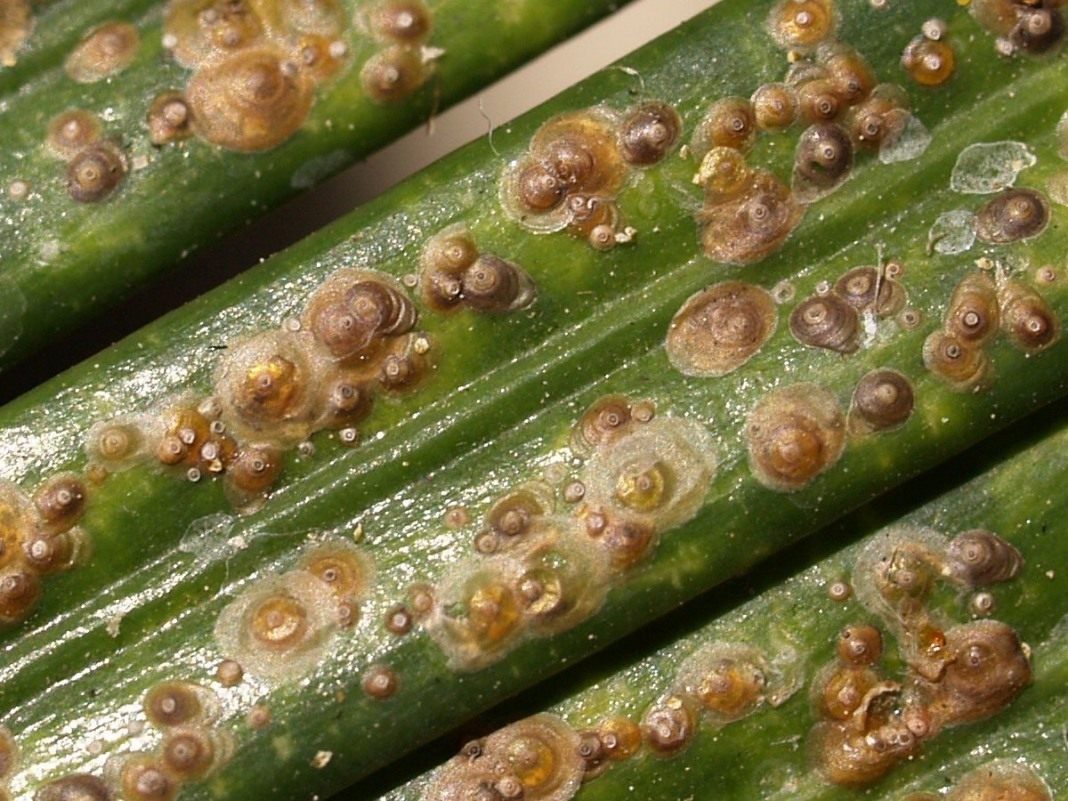
Brown shield
To avoid pests and increase the immunity of the plant, do not neglect fertilizing. Compliance with the temperature and normal humidity will make the flower resistant to disease.
Propagation and transplantation of a flower at home
A young Yucca transplant must be carried out annually; for older plants, updating the topsoil is sufficient. For transplantation, it is important to choose high-quality and nutritious soil. The soil should be loose, and include the following components:
- black earth;
- peat;
- sand;
- turf land.
For a transplant, a pot that fits the size of the root system is suitable. It is important that there are drainage holes for draining the fluid. At the bottom of the pot you need to put expanded clay drainage, the layer of which should be about 2 cm.
For drainage, the pot must be filled with a layer of soil, evenly from all sides, after which the soil must be rammed with hands. After transplanting, the plant should be watered a day later. During this time, the wounds on the roots of the plant will heal, and the risk of root decay will be less. To root the plants after transplanting, the room temperature should be at least 25˚C.
The most commonly used methods of breeding yucca:
- seeds;
- segments of the stem (cuttings);
- root processes;
- the top of the stem.
The first two methods are the most time-consuming, require constant monitoring, daily care of the plant and the skill of growing flowers.
Seeds
For planting seeds, it is advisable to pick up light soil, which includes sand, sheet and turf soil in the same proportions. Before planting, Yucca seeds need to be pricked or notched. Next, you need to follow the following algorithm:
- Place the seeds in the soil and cover them with foil.
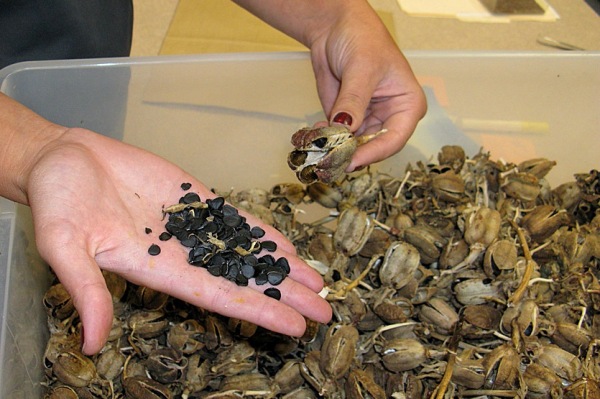
Yucca seeds for planting - Place the sprouts in a warm place and keep the soil moist. Ventilate the seedlings and wipe the inside of the film. Sprouts will appear in a month, after which they can be planted in separate pots.
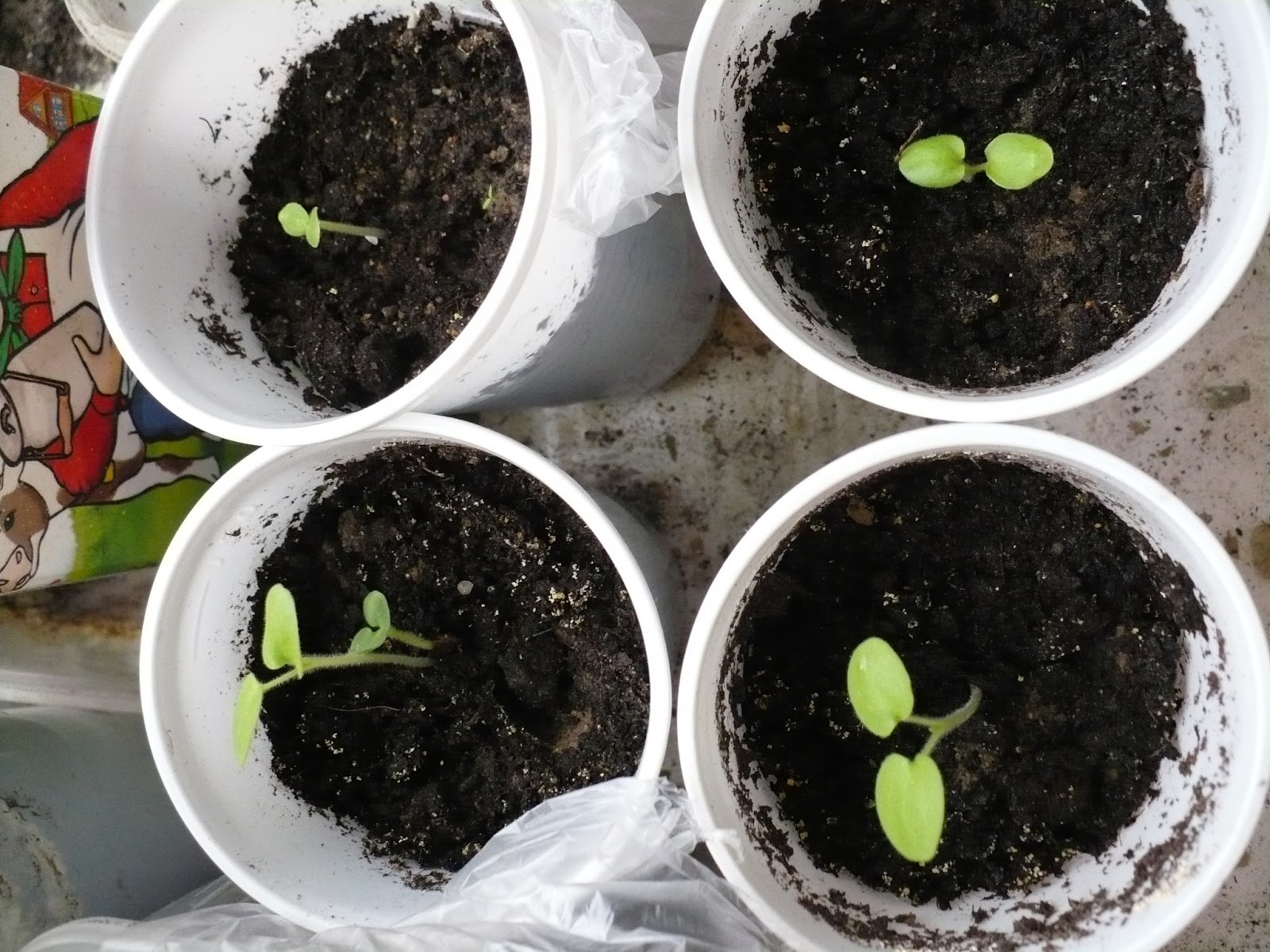
Propagation of Yucca by Seeds - In pots for new flowers, first make a drainage layer of expanded clay or pebbles.
Cuttings
Old plants are gradually exposed, losing their lower leaves. Such plants can be cut into cuttings and grow new flowers. At the same time, you do not need to throw out the old yucca stump: it can give new shoots.
Reproduction is carried out as follows:
- Cuttings need to sleep with crushed coal and dry, and then root in water or sand. Put the cut into the water with the lower end. So you can get one or more small plants.
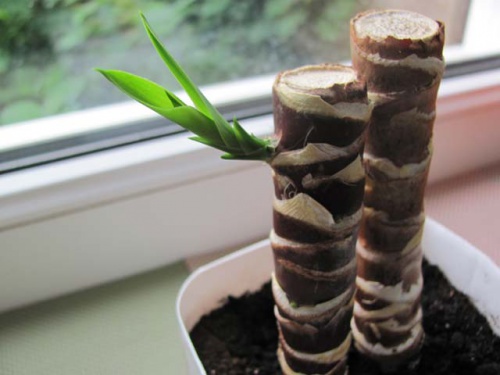
Yucca Cuttings - Before rooting parts of the stem in the sand, the segments must be put in a solution of water and a growth stimulator for 2-3 days. After this, the stems should be laid horizontally in moist soil to a depth of not more than 5 cm. Keep the soil moist while growing the flower. With the advent of the first leaves, watering needs to be reduced. Planting in individual pots can be carried out when each stalk has its own roots and leaves. They appear after 1-2 months.

Propagation of yucca by cuttings
Root processes
In the summer, root offspring appear on the lower part of the yucca. Separating them from the mother plant will not only help keep the flower healthy and strong: in this way yucca can be propagated.The processes are separated from the flower in the fall. Place the cuts must be sprinkled with sulfur.
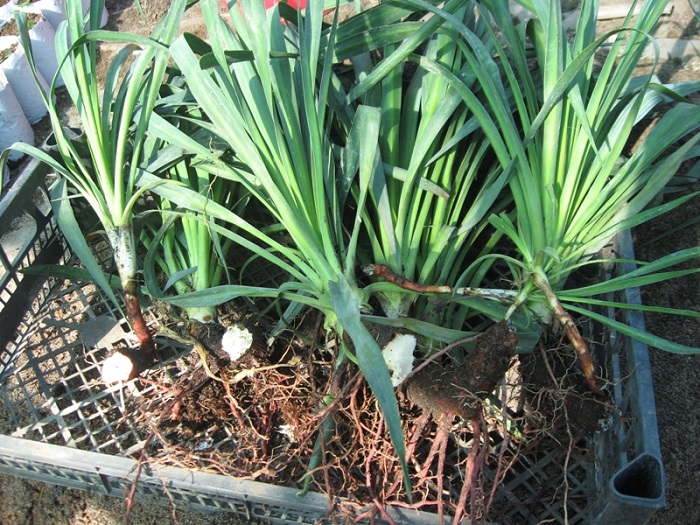
The processes need to be transplanted into fertile land mixed with sand. After placing the shoots in the ground, they need to be watered, and cover the container in which they are located with glass or film. During rooting of the shoots, it is necessary to ventilate the greenhouse, maintain the average soil moisture level and temperature not less than 20˚C.
Top of the stem
This method of plant propagation is the simplest. For its implementation, you can take any rosette of leaves from the top of the yucca. A branch that breaks off accidentally is also suitable. If such a branch is very long, you need to remove part of the trunk with a knife. The remaining stalk needs to be dried and the lower leaves removed. Then you need to plant the stalk in the nutrient ground and cover with a film.
During rooting, it is important to keep the soil moist. However, it is worth remembering that the earth dries slowly under the film, so watering should be moderate and carried out as necessary. Excess moisture leads to the appearance of gray rot.
Cuttings can also be put in water to form the root system. To prevent decay, wood ash or activated carbon should be added to the water.
Common Growing Questions
Excessive watering can also provoke the appearance of aerial roots. If there are few roots, then do not worry. You can not prune the roots when they are large: install them in the soil so that the air appendages are on its surface.
Yucca is a fairly unpretentious plant that will delight evergreen leaves with proper care. It will be a great decoration for any home and interior.

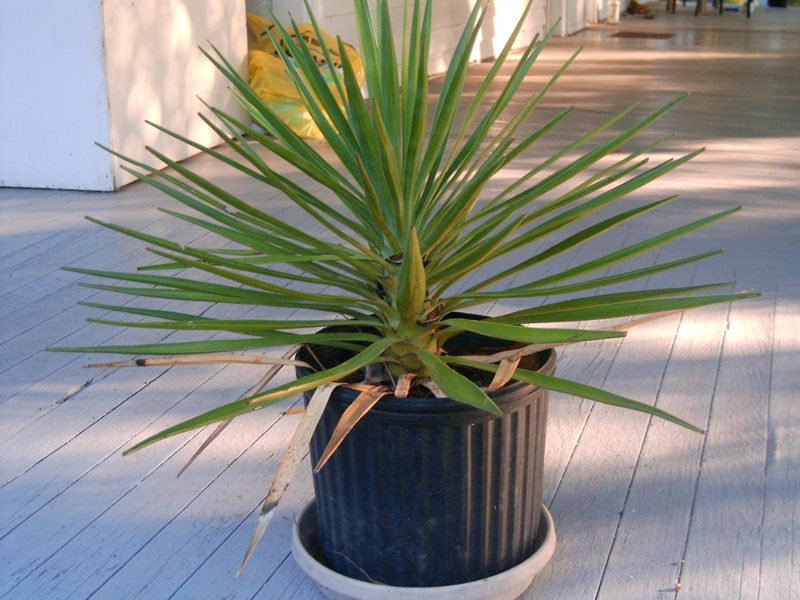
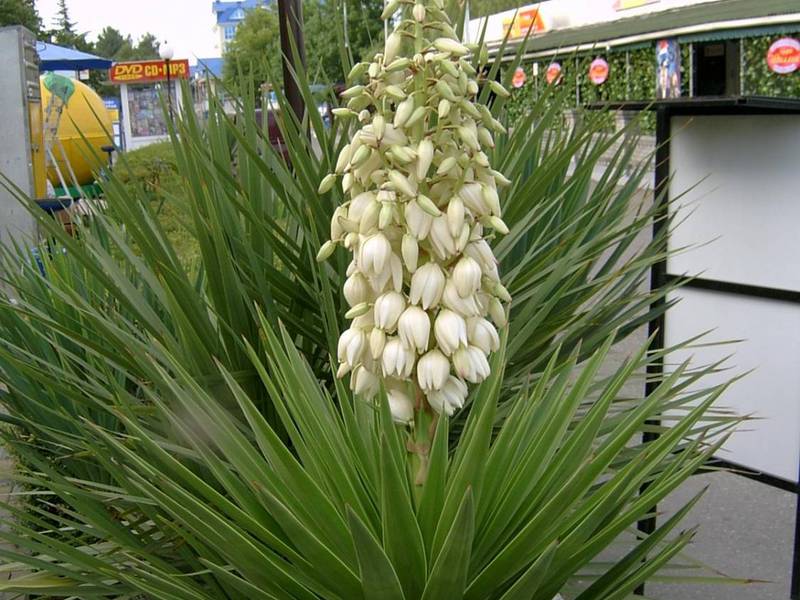
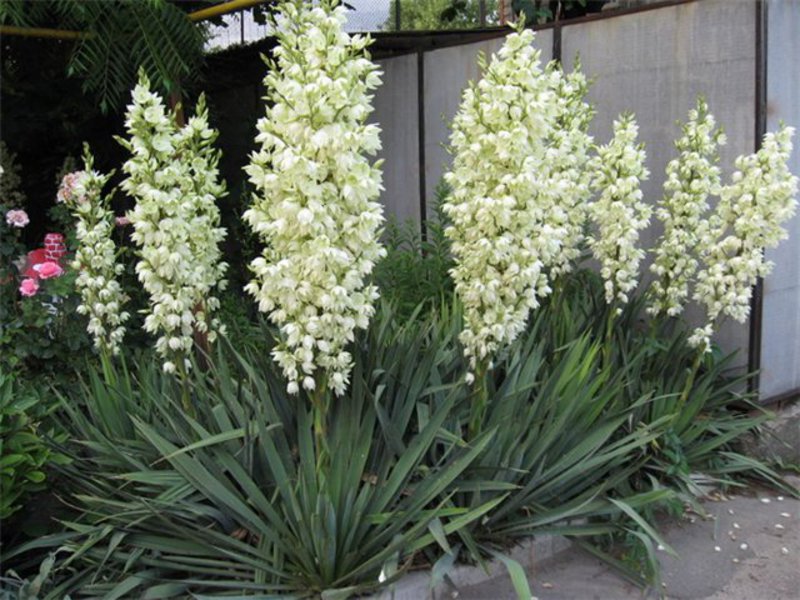
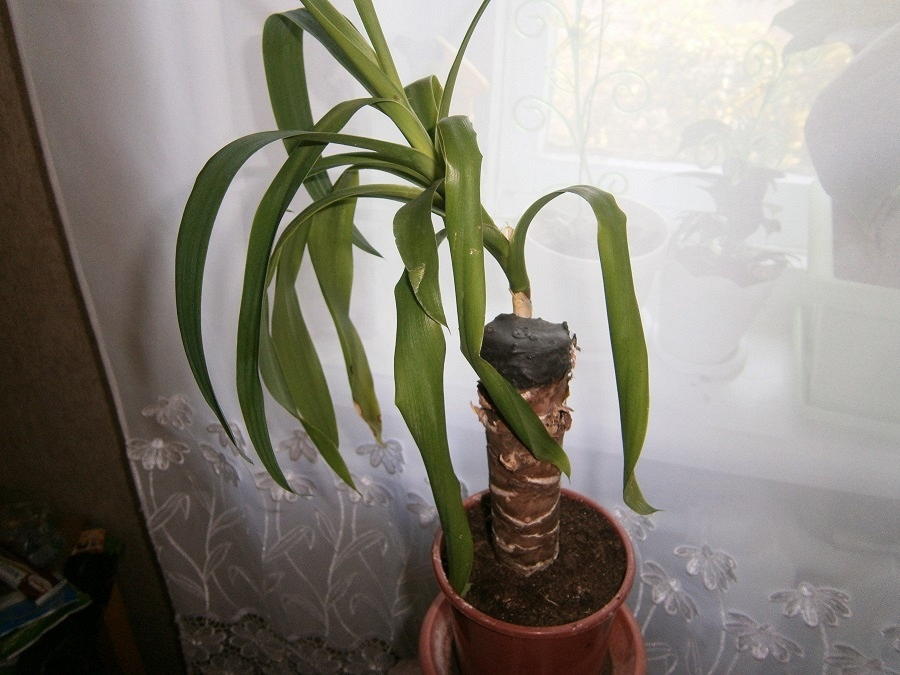
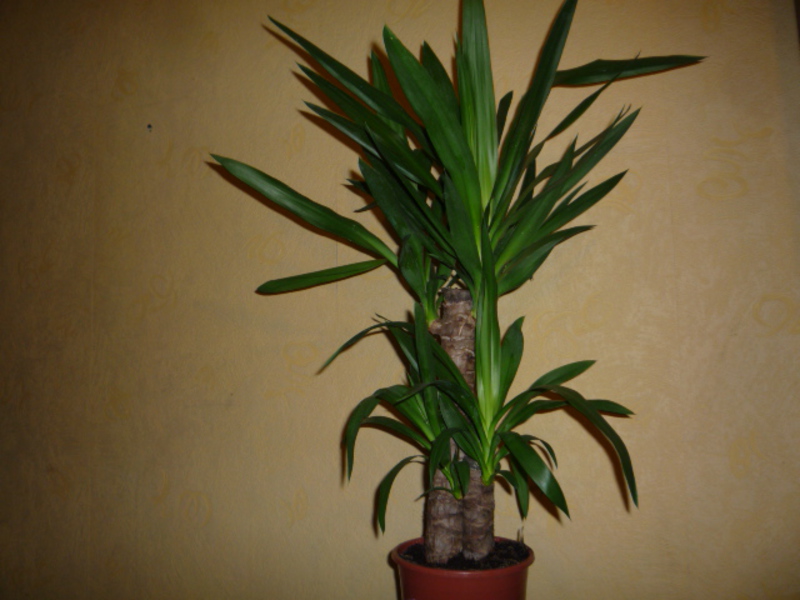
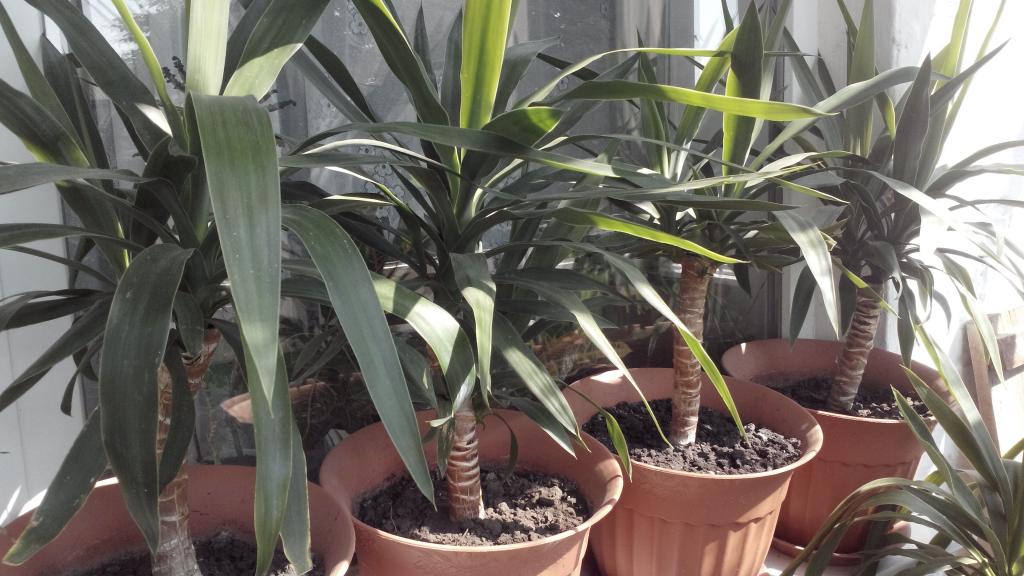
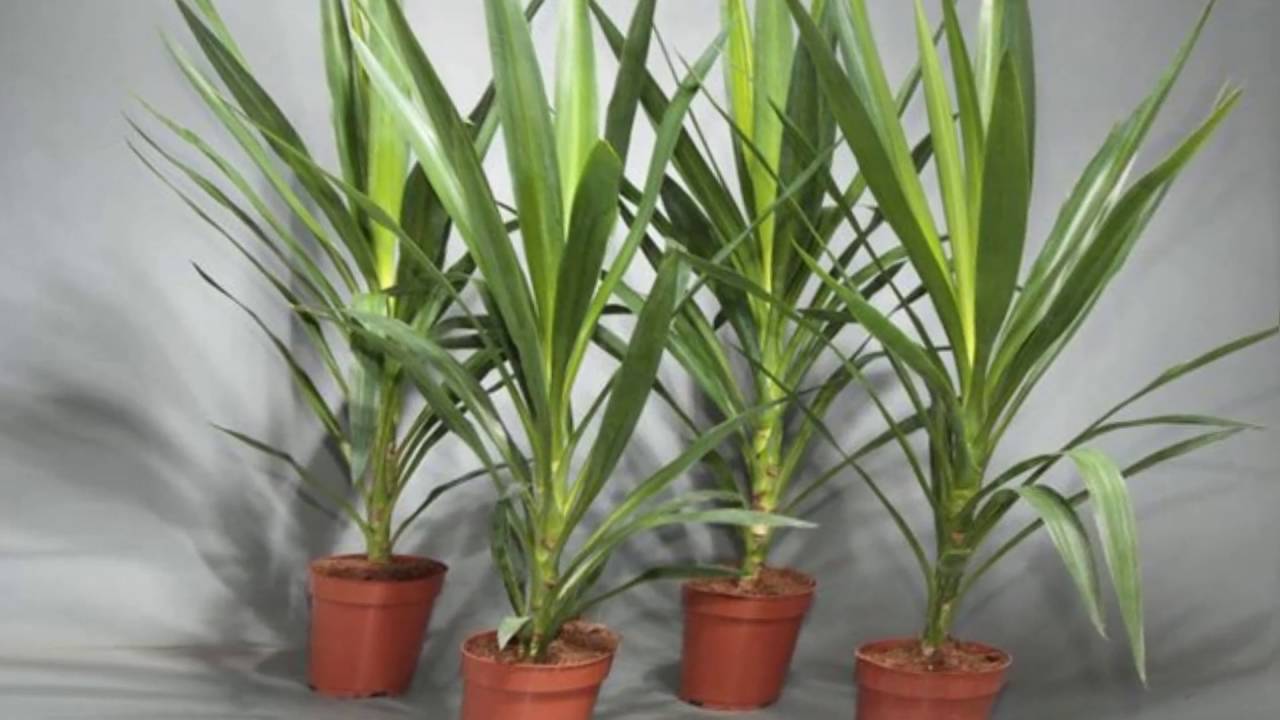
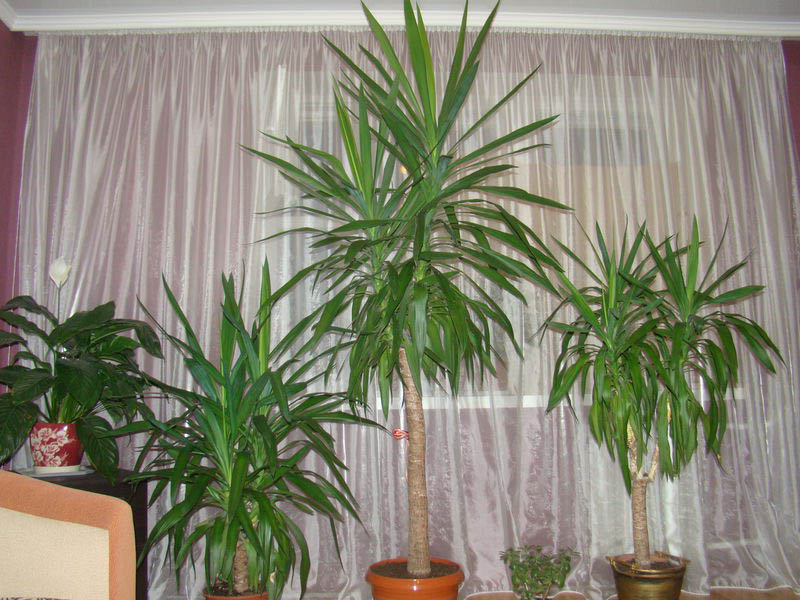
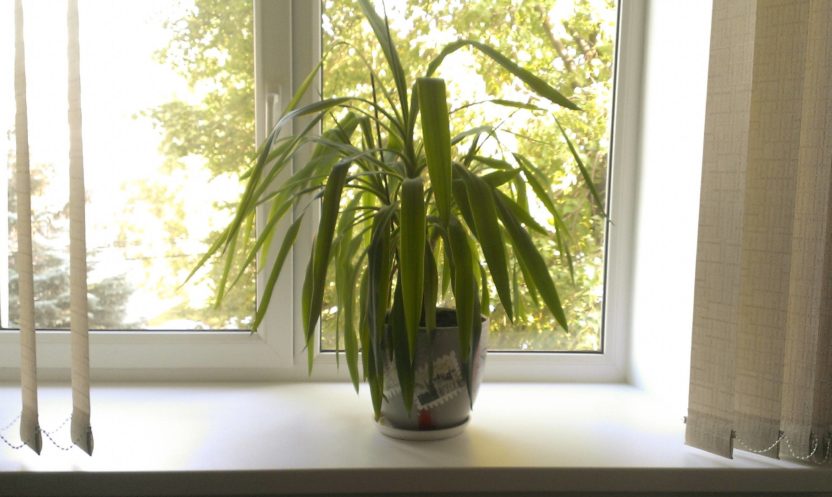
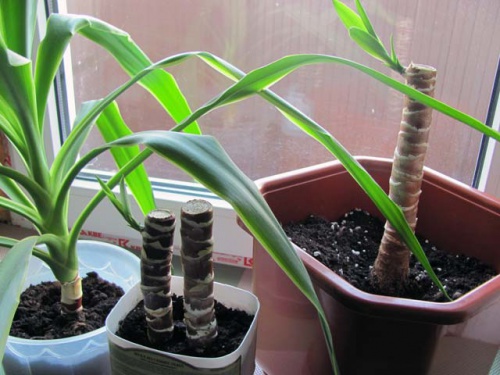
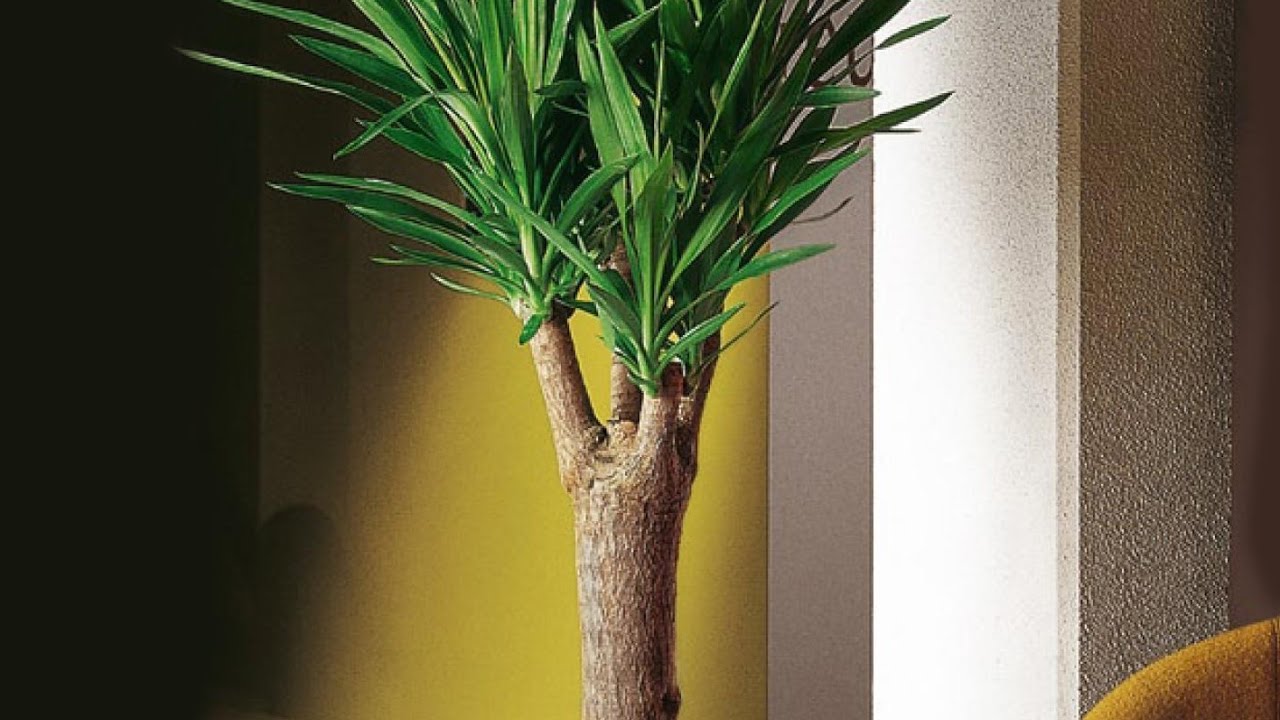

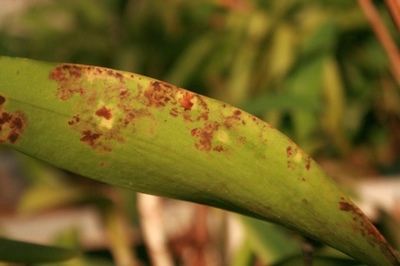

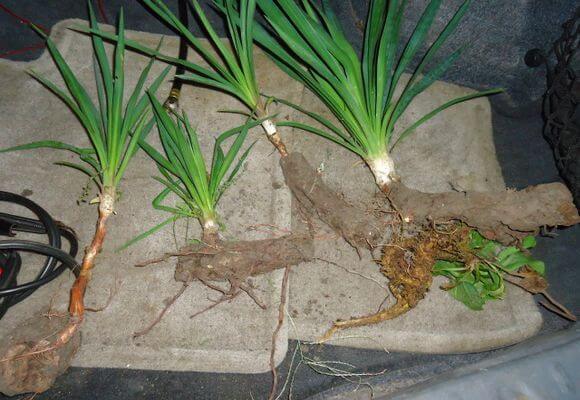

 10 beautiful annuals that bloom all summer
10 beautiful annuals that bloom all summer Sow in the ground, without seedlings: 10 beautiful and unpretentious flowers
Sow in the ground, without seedlings: 10 beautiful and unpretentious flowers Platicodon planting and outdoor care
Platicodon planting and outdoor care Hosta - planting and care in the open ground in the Urals
Hosta - planting and care in the open ground in the Urals